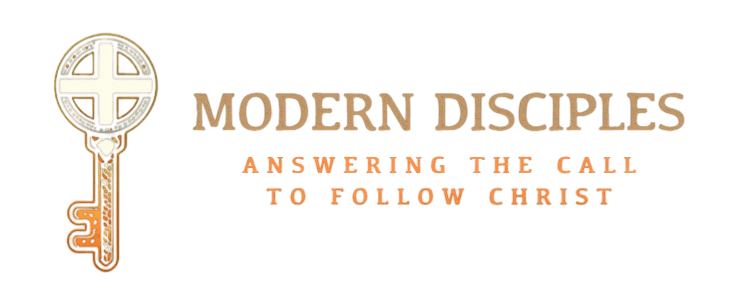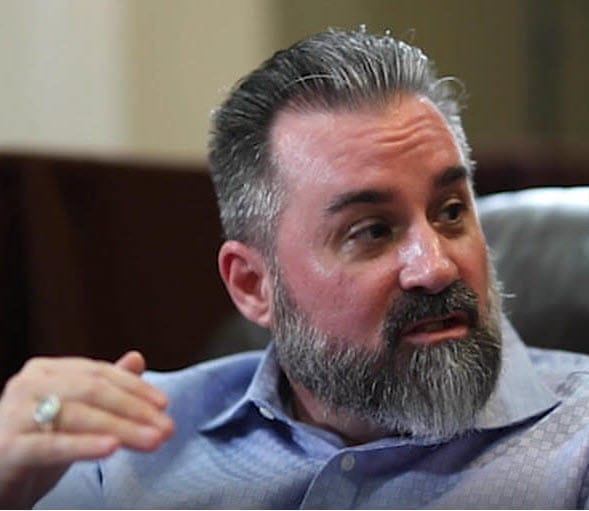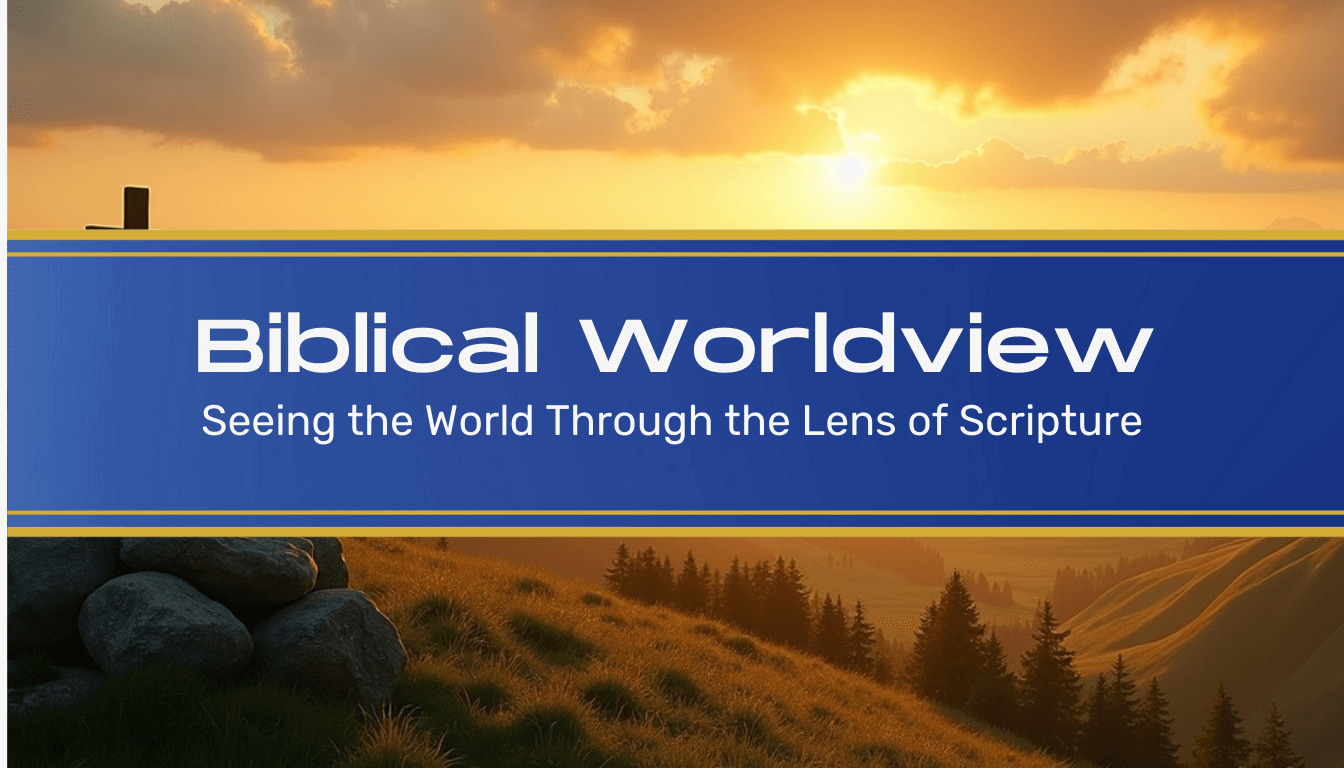
Intelligent Design
Evidence for a Creator
Here's what drives me nuts about this whole debate: both sides act like you have to check your brain at the door. Either you're a mindless fundamentalist or a godless materialist. Bull. The evidence for design is staring us in the face—from the fine-tuning of physics to the information systems in every living cell. Micro-promise: in the next few minutes, you'll see why Intelligent Design isn't about religion versus science, but about following evidence wherever it leads.
Look, I'm not asking you to abandon critical thinking. I'm asking you to use it. When you find a watch in the woods, you don't assume it assembled itself. When you see information systems more complex than anything humans have ever created, maybe—just maybe—there's a Designer behind it all.
The concept of Intelligent Design suggests that certain features of the universe and life are best explained by an intelligent cause rather than undirected natural processes. This isn't about rejecting science. It's about honest investigation. From the precise calibration of universal constants to the intricate machinery inside every cell, the fingerprints of design are everywhere.
"The heavens declare the glory of God; the skies proclaim the work of his hands." (Psalm 19:1, ESV)
What is Intelligent Design?
Intelligent Design examines the complexity and information content found in nature and concludes that some features are best explained by an intelligent cause. It's not creationism in disguise—it's a scientific approach that follows evidence rather than philosophical assumptions.
Think of it this way: when archaeologists find arrowheads, they don't assume rocks randomly chipped themselves into perfect points. They recognize design. When SETI scientists search for extraterrestrial intelligence, they look for patterns that couldn't arise by chance. Same principle applies to biology and cosmology.
Key Concepts You Need to Know
Specified Complexity: This refers to systems that are both highly complex and specifically arranged to perform a function. A pile of Scrabble letters is complex but not specified. A Shakespeare sonnet is both complex and specified—it conveys meaningful information.
DNA fits this pattern perfectly. It's not just complex; it contains specified information that builds proteins, regulates cell functions, and passes on hereditary traits. Random processes can create complexity, but they don't create specified complexity.
Irreducible Complexity: Some biological systems require all their parts to function. Remove any component and the system fails completely. These systems couldn't have evolved gradually because intermediate stages would be non-functional.
The bacterial flagellum is a classic example—a molecular motor with dozens of protein parts that must all work together. It's like finding a fully assembled outboard motor at the cellular level. You don't get that from random mutations.
Sharp Edge: If you think a cell phone evolved from a rock, I've got some oceanfront property in Kansas to sell you.
The Fine-Tuning of the Universe
The universe appears calibrated for life with stunning precision. Change any of dozens of fundamental constants by tiny amounts, and you get a sterile cosmos where stars can't form, chemistry doesn't work, or galaxies fly apart too quickly for planets to exist.
Gravitational Constant: If gravity were slightly stronger, stars would burn out too quickly for life to develop. Slightly weaker, and stars wouldn't form at all.
Cosmological Constant: This governs the expansion rate of the universe. Physicist Steven Weinberg calculated that if it were larger by one part in 10^120, the universe would expand too rapidly for galaxies to form. That's like hitting a target one inch wide from a distance of 20 billion light-years.
Strong Nuclear Force: This holds atomic nuclei together. Increase it by 2%, and hydrogen couldn't exist. Decrease it by 5%, and you can't make carbon or oxygen.
The list goes on. The electromagnetic force, the weak nuclear force, the mass ratios of fundamental particles—all appear fine-tuned for life. Physicist Paul Davies puts it bluntly: "The impression of design is overwhelming."
Some scientists propose the multiverse theory to explain this fine-tuning—infinite universes with different constants, so naturally one would support life. But that's not science; it's speculation. We can't observe other universes, test the theory, or make predictions. It's a philosophical escape hatch, not an empirical explanation.
Information Systems in Biology
Every living cell contains information storage and processing systems that make our best computers look primitive. DNA stores information in a four-letter code (A, T, G, C) that gets transcribed, translated, and executed with stunning precision.
The DNA Code: The human genome contains roughly 3.2 billion base pairs of information. That's equivalent to about 800 megabytes of data—compressed into a space smaller than a pinhead. But it's not just storage; it's functional information that builds proteins, regulates development, and maintains life.
Bill Gates, who knows something about information systems, said: "DNA is like a computer program but far, far more advanced than any software ever created."
Protein Folding: Proteins must fold into precise three-dimensional shapes to function. The number of possible configurations for a typical protein is astronomically large—more than the number of atoms in the observable universe. Yet proteins fold correctly in milliseconds. Random processes don't solve problems like that.
Cellular Machinery: Cells contain molecular machines that rival anything humans have built. DNA polymerase copies genetic information with error rates lower than one in a billion. ATP synthase generates cellular energy through a rotary motor mechanism. Ribosomes translate genetic code into proteins using a process more sophisticated than any factory assembly line.
Information theorist Hubert Yockey calculated that the probability of a functional protein arising by chance is less than one in 10^164. That's not just unlikely—it's impossible within the age of the universe.
Irreducible Complexity in Action
Some biological systems are irreducibly complex—they require all their parts to function and couldn't have evolved through gradual, step-by-step processes.
The Bacterial Flagellum: This molecular motor contains about 40 different proteins that must all work together. It has a rotor, stator, drive shaft, universal joint, and propeller. Remove any component and the system fails. Evolutionary biologist Kenneth Miller admits the flagellum is "breathtakingly complex."
Blood Clotting: When you cut yourself, a cascade of chemical reactions stops the bleeding. This system involves dozens of proteins that must activate in the right sequence. Too little clotting and you bleed to death. Too much and you die from blood clots. The system had to work perfectly from the beginning.
The Human Eye: Darwin himself called the eye a problem for his theory. The eye requires dozens of coordinated parts—cornea, lens, retina, optic nerve, visual cortex processing. Each part is useless without the others. A partial eye doesn't provide partial vision; it provides no functional advantage.
Critics claim these systems could evolve through co-option—borrowing parts from other systems. But that doesn't solve the problem. You still need all the parts to work together in a new configuration, and you need the genetic information to coordinate their assembly.
The Origin of Life Problem
Evolution assumes life already exists and then explains how it changes over time. But how did life begin in the first place? This is where materialistic explanations hit a brick wall.
The Information Problem: Life requires both hardware (proteins) and software (DNA). But DNA is needed to make proteins, and proteins are needed to make DNA. It's a chicken-and-egg problem that random chemistry can't solve.
The Probability Problem: Biochemist Douglas Axe calculated that functional proteins are incredibly rare in sequence space. The odds of finding a functional protein by random search are about one in 10^77. That's like finding a specific atom in the entire observable universe.
The Laboratory Problem: Despite decades of origin-of-life research, scientists haven't come close to creating life from non-living chemicals. The Miller-Urey experiment produced a few amino acids under unrealistic conditions, but amino acids aren't life any more than bricks are a house.
Chemist James Tour, who has synthesized some of the most complex molecules ever made, is blunt about the origin of life: "We have no idea how it happened. None."
Sharp Edge: Saying life arose by chance is like saying a tornado could blow through a junkyard and assemble a Boeing 747. Actually, that's insulting to tornadoes—they're more organized than random chemistry.
Addressing the Skeptics
"Isn't Intelligent Design just creationism in disguise?"
No. Intelligent Design is based on empirical evidence, not religious texts. It doesn't identify the designer or specify when design occurred. It simply follows the evidence for design in nature.
Scientists routinely detect design in other contexts. Archaeologists distinguish between designed artifacts and natural rocks. SETI researchers search for designed signals from space. Forensic scientists detect intelligent causation in crime scenes. Intelligent Design applies the same logic to biology and cosmology.
"Doesn't evolution explain everything?"
Evolution explains some things—like antibiotic resistance in bacteria or changes in finch beaks. But it doesn't explain the origin of life, the fine-tuning of physics, or the information content of DNA.
Even if evolution could account for biological complexity (which is debatable), it can't explain why the universe is fine-tuned for life in the first place. You need a universe capable of supporting evolution before evolution can do anything.
"What about bad design or vestigial organs?"
This objection assumes we know what optimal design looks like. Maybe what appears suboptimal serves purposes we don't understand yet. The appendix was considered vestigial until we discovered its role in immune function.
Besides, even if some designs are suboptimal, that doesn't negate the overwhelming evidence for design elsewhere. A few typos don't prove a book wrote itself.
"Doesn't science require natural explanations?"
Science requires following evidence wherever it leads. If the evidence points to design, then design is the scientific conclusion. Ruling out intelligent causation a priori isn't science—it's philosophical materialism.
Intelligent Design doesn't stop scientific investigation; it redirects it. Instead of asking "How did this evolve?" we ask "How does this system work?" That's led to productive research in areas like biomimetics, where engineers copy biological designs.
The Implications of Design
If the universe and life show evidence of design, what does that mean for us?
Purpose and Meaning: Design implies purpose. If we're designed, then our lives have meaning beyond mere survival and reproduction. We're here for a reason.
Moral Accountability: A Designer who creates rational, moral beings likely cares about how we live. This gives weight to concepts like right and wrong, justice and mercy.
Hope and Wonder: Design suggests the universe isn't a cosmic accident but a masterpiece created by a mind greater than our own. That's both humbling and inspiring.
"For since the creation of the world God's invisible qualities—his eternal power and divine nature—have been clearly seen, being understood from what has been made, so that people are without excuse." (Romans 1:20, ESV)
The apostle Paul argued that creation itself testifies to God's existence and character. Modern science has only strengthened this case by revealing layers of complexity and fine-tuning that ancient people couldn't have imagined.
Where Do We Go From Here?
The evidence for Intelligent Design raises profound questions: Who is the Designer? What does He want from us? How should we respond to the evidence of His handiwork?
These questions move us beyond science into theology and philosophy. But that's not a weakness—it's the natural progression of honest inquiry. When the evidence points to design, it's reasonable to ask about the Designer.
For Christians, Intelligent Design confirms what Scripture teaches: that God created the heavens and the earth with wisdom and purpose. For skeptics, it provides a bridge between scientific evidence and spiritual questions. For everyone, it offers a sense of wonder at the complexity and beauty of creation.
We don't sidestep hard topics. We face them with Scripture, honesty, and respect. Start by exploring our category pages—they're practical and built to help you think biblically. If what you find is useful, take your time and drill down into the articles within each category. If you do, you'll learn a lot—and you'll be better equipped to live like Christ.
The Existence of God - Examine the philosophical and scientific evidence for God's existence through cosmological, teleological, and moral arguments.
The Reliability of the Bible - Discover why Scripture can be trusted through manuscript evidence, archaeology, and fulfilled prophecy.
Jesus and the Resurrection - Explore the historical evidence for Christ's resurrection and why it's the cornerstone of Christian faith.
Evolution vs. Creation - Navigate the complex relationship between faith and science in understanding origins.
The Problem with Evil - Address one of the most challenging questions in apologetics: why does a good God allow suffering?
Put This Into Practice
• Pick one example of design (DNA, fine-tuning, irreducible complexity) and research it deeper this week. Write down what you find most compelling.
• Practice explaining the bacterial flagellum or blood clotting cascade to a friend in simple terms. See if they recognize the design.
• When someone claims "science disproves God," ask them to be specific. What evidence exactly? Most can't answer.
• Read Psalm 19 and Romans 1:18-25. Notice how Scripture connects creation to knowledge of God.
• Pray for wisdom in conversations about origins. Ask God to help you speak truth with both confidence and humility.
Conclusion
The evidence is clear: the universe and life bear the unmistakable marks of intelligent design. From the fine-tuning of cosmic constants to the information systems in every cell, we see complexity and purpose that random processes cannot explain.
This isn't about choosing between faith and reason—it's about letting reason lead us to faith. The same scientific method that reveals the structure of atoms and the expansion of the universe also reveals the fingerprints of a Designer.
The question isn't whether there's evidence for design. The question is whether we're honest enough to follow that evidence to its logical conclusion. Truth doesn't panic, and neither should we.

Chris Daniel, just a servant of Christ calling others to be ready. Like the Bereans, I try to examine Scripture daily to see if what I hear is true. If you're struggling to live as we're called, you're still in the fight. Don't give up.
Category 2 - Christian Apologetics

Category 3 - Bible Study

Category 4 - Theology


"Most middle-class Americans tend to worship their work, work at their play, and play at their worship. As a result, their meanings and values are distorted. Their relationships disintegrate faster than they can keep them in repair. Their lifestyles resembles a cast of characters in search of a plot." - Gordon Dahl
"The Bible is a reliable collection of historical documents written down by eyewitnesses during the lifetime of other eyewitnesses that report supernatural events that took place in fulfillment of specific prophecies and claimed their writings were divine rather than human in origin."
- Dr. Voddie Baucham on 2 Peter 1





